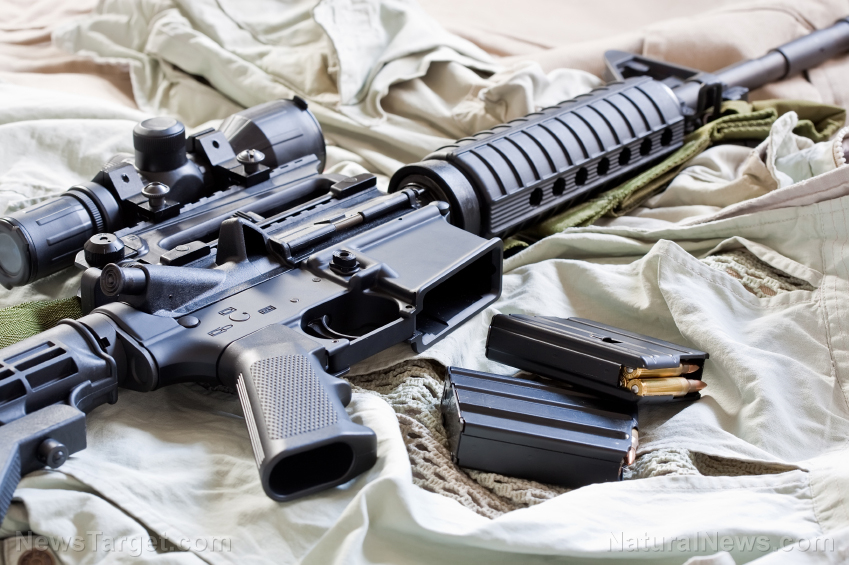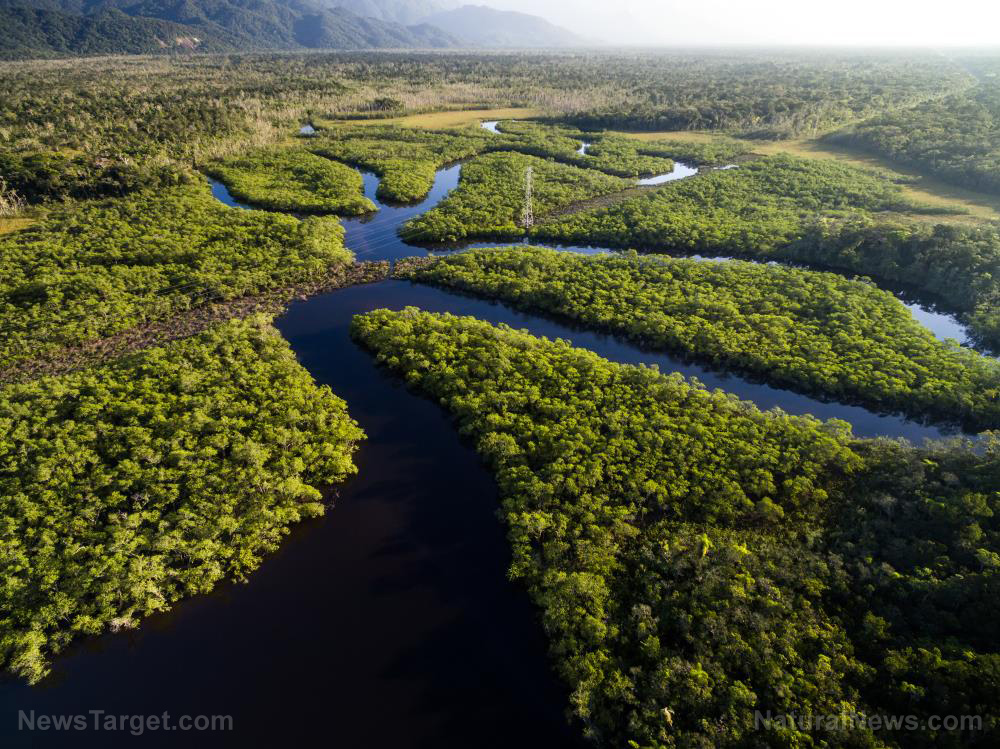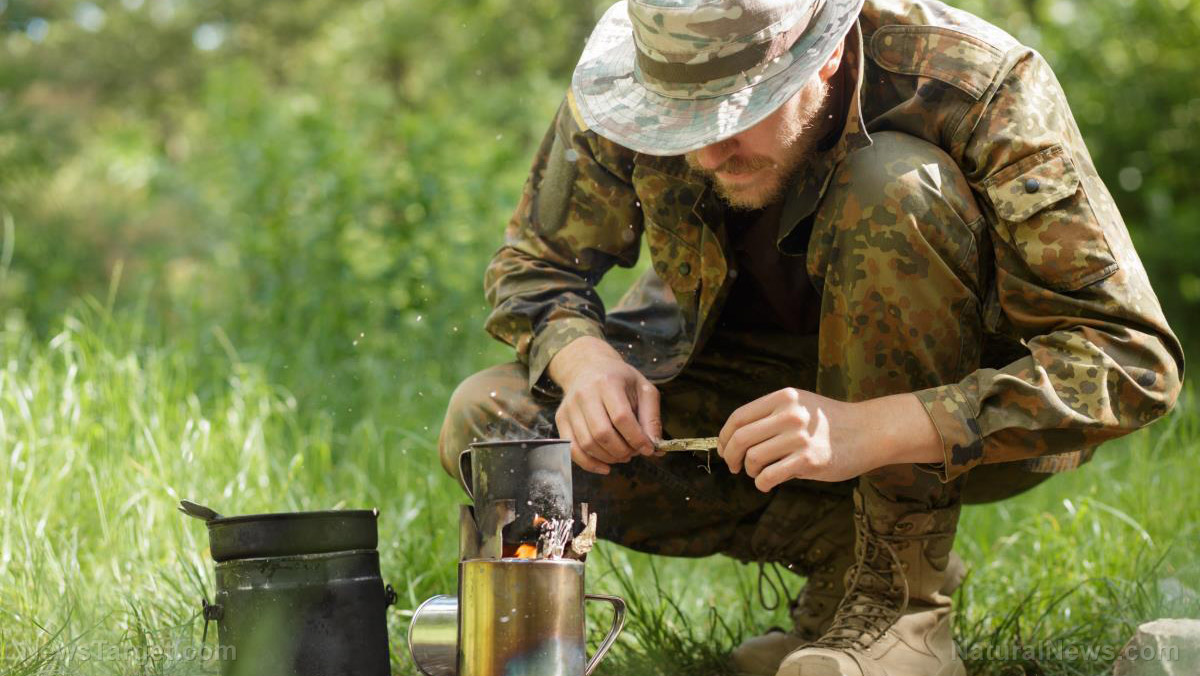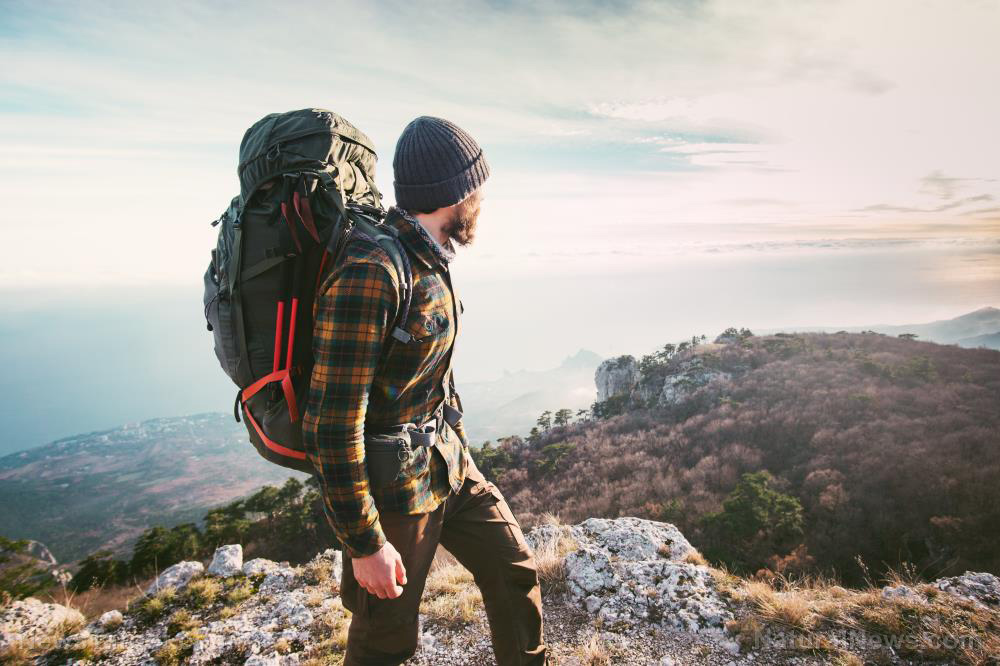What is bowfishing and how does it help you survive in the wilderness?
02/18/2020 / By Zoey Sky

Preppers are practical individuals. They understand the importance of mastering survival skills like bowfishing, a more adventurous form of regular fishing. (h/t to PreppersWill.com)
Bowfishing combines the skills that you need for hunting and fishing. Learning the basics of bowfishing and practicing also ensures that you can find food when on a tight budget or after SHTF.
Bowfishing doesn’t require complicated or expensive gear. Rather, you just need to be patient and train regularly.
Skills and state laws
Unlike regular fishing, bowfishing limits your target to fish you can see, which are non-game or rough fish.
If you’re going bowfishing, you can catch carp, gar and buffalo. These fish characteristically surface and roll, which should give you enough time to aim and shoot.
It is legal to take rough fish in almost all states. A lot of states will only require a valid fishing license. However, it is best to check the laws in your state because you may live in one that considers it illegal to take bass or other gamefish with a bow.
Consult your state game and fish department to determine the kinds of fish you can shoot with a bow and arrow.
Once you’re done shooting fish, keep your catch alive as long as possible. Alternatively, you can clean the fish and cool it on ice. Always bleed and gut fish before icing. (Related: Survival fishing: 5 tips for catching, eating, and preserving fish.)
3 Kinds of rough fish
Carp
The common carp (Cyprinus carpio) is the most popular of the rough fish. It has two pairs of fleshy whiskers and notched dorsal fins.
You can catch carp in lakes, farm ponds, rivers and streams in almost all states. As a non-predator, carp is a bottom feeder that lives on insect larvae, plankton and aquatic plants.
Average-sized carp weigh between four to eight pounds, but it can reach 15 to 30 pounds.
It is best to shoot carp in the spring when the waters begin to warm and the spawn begins. Ask local fishermen for the best spots for spawning on lakes and rivers.
Gar
The gar (Lepisosteidae spp.) is one of the largest and most challenging rough fish to shoot. Gars have long beaks with numerous sharp teeth and a slender cylindrical body.
Gars can be found in southern Canada to Central America. Five species of gar can be found in the U.S.
Gars prefer warm, sluggish backwaters in lowland rivers and lakes. Gars often sun themselves quietly beneath the water’s surface.
Gars supplement their oxygen supply by frequently breaking the water surface, ensuring that you have enough time to aim and shoot while bowfishing. Gars require a bit of skill and strength because they will try to escape when caught.
The average gar weights five to eight pounds, but the alligator gar ( Atractosteus spatula) can reach a whopping 100 pounds and 10 feet in length.
While hunting gar, anchor your boat in areas they frequent. Wait or drift slowly with the current and use an electric trolling motor to quietly control the boat’s direction and speed.
Other rough fish for bowfishing
Freshwater rough fish
- Bowfin (Amia calval)
- Bigmouth buffalo (Ictiobus cyprinellus)
- Catfish (Siluriformes)
- Eel (Anguilliformes)
- Perch (Perca)
- Smallmouth Buffalo (Ictiobus bubalus)
- Suckers (Catostomidae)
Saltwater rough fish
- Dogfish (Squalidae)
- Stingrays (Myliobatoidei)
Bowfishing tactics
You can hunt rough fish from a boat, by the shore or you can wade quietly through shallow waters.
Bowfishermen hunt throughout the year, but the prime season is from March to October. However, this will vary depending on your region and the species you’re hunting.
From July to August, you can hunt carp near cool shady spots, like under fallen timber, old stumps or overhangs. When carp are feeding, their rooting will muddy up the water and make it difficult to aim. Be patient: you can spot carp by looking for their backs that will occasionally break the surface.
When wading in backwaters, walk slowly and avoid splashing. Stop every now and then to listen for the sound of splashing. Walk against the wind, with the wave action coming toward you. The waves mess with the carp’s eyesight so you can hunt undetected.
While on a flat-bottomed boat, drift along with the current while searching for prey. You can see a few feet under the water when the water clears. Watch out for the fish that appear as dark, fleeting shadows.
If you prefer night hunting, use a quality spotlight or Q-Beam to spot surfacing fish. Act fast since the light spooks the fish, which will hide in the shadows. It is best to go night shooting at the base of a slow running spillway since carp and gar gather in the receding pools.
When hunting for gar or other bigger fish, let the fish wear itself out before you land it. Fish bigger than 20 lbs. may require a second bowman to shoot it.
A gar’s armor plate can cut your line. Have a small club or a handgun that fires rat shot so you can kill gar once it’s brought alongside your boat.
Bowfishing equipment
Bowfishing requires basic and affordable equipment. A beginner can start with an inexpensive recurve bow, a bow reel and a solid fiberglass fishing arrow with a sharp barbed point.
Get a recurve bow with a minimum pull of 45 pounds, which should have enough force to drive the fishing arrow through the water and penetrate the tough scales of rough fish.
Unlike a compound bow, a recurve bow is affordable. The latter is also easier to operate and maintain. The recurve is best for faster shooting.
There are different kinds of bow reels, from open-faced drum type to mounted crank reels.
Solid fiberglass fishing arrows are better for bowfishing than standard arrows, as they are heavier and thus ensure greater penetration of the water with minimal breakage. Rubber fletching is recommended, but you won’t need it if your shots are under 15 yards.
Get quality fishing points, like those with hardened steel and reversible barbs. Reversible barbs aren’t a must, but they make it easier to remove the arrow from a fish once you’ve landed it.
Accessories
- Arm-guards
- File (For sharpening arrow points.)
- Finger tabs
- Five or six extra points
- One or two spare arrows
- Polaroid sunglasses (To reduce glare from open water on bright, sunny days.)
Bowfishing tips
Practice is important for a bowfisherman. Shooting a target in the water is more difficult than one on land since light refracts in the water. A fish is closer to you than it appears while bowfishing, so aim below the image.
Fish barely under the surface doesn’t need as much adjusting as fish that’s in a deeper area. Aim straight down for fish directly under you since no refraction allowance is necessary.
Bowfishing is a survival skill that gives you access to a fresh source of protein, especially after SHTF.
Sources include:
Tagged Under: bowfishing, bug out, fishing, food collapse, food supply, freshwater fish, how-to, off grid, preparedness, prepping, saltwater fish, starvation, survival, survival food, sustainable living
RECENT NEWS & ARTICLES
COPYRIGHT © 2017 · SURVIVAL NEWS



















